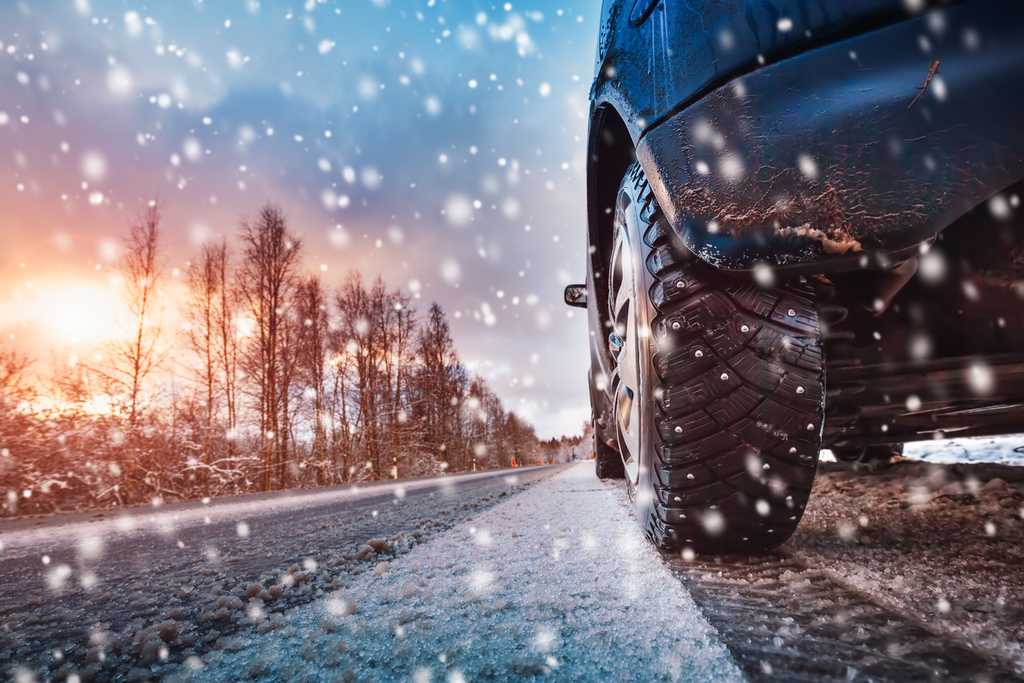If you drive your car over the river and through the woods to grandma's house or any other destination from December 24th through December 31st, check the road conditions and prepare for traffic.
Christmas and New Year's Eve are two holidays with elevated traffic fatalities. The Insurance Bulletin crunched the numbers from the National Highway Traffic Safety Administration to see which states have the best and worst track records at the end of the year.
See the states with the most combined traffic fatalities at the end of the year in the map below.
We compared holiday fatalities to population size in each state so that the most populous states wouldn't get an unfair reputation as the most dangerous states. The top state for holiday fatalities per 100,000 people is Alaska. You might think the fact that Alaska is shrouded in darkness for weeks around Christmas and New Year's has something to do with it; however, the state with the second highest number of holiday fatalities per capita is Florida. Maybe snowbirds are the common denominator?
The states with the lowest number of holiday fatalities are in the Northeast and the northern Rocky Mountains. Vermont is the safest place to be on the road this holiday, with zero reported holiday fatalities during the period covered by our research.
New Year's Eve is not the time to travel in these states
If you are planning on partying on New Year's Eve, be sure to plan to take a car service or nominate a dedicated sober driver. The following states top the list for most fatalities on New Year's Eve.
| State | NYE Fatalities per 100,000 |
|---|---|
Alaska | 1.6 |
North Dakota | 1.3 |
Wisconsin | 0.9 |
Kentucky | 0.9 |
Florida | 0.8 |
New Mexico | 0.6 |
Mississippi | 0.6 |
Utah | 0.6 |
Arkansas | 0.6 |
Oklahoma | 0.6 |
Christmas has more fatalities in some states
It's probably not a surprise to many readers that U.S. car crashes involving a fatality happen 72% more often on New Year's Eve than on Christmas. However, some states are more likely to have fatal accidents on Christmas than January 31st.
| State | Christmas Fatalities per 100,000 |
|---|---|
Oregon | 0.6 |
South Carolina | 0.6 |
Missouri | 0.6 |
Alabama | 0.5 |
Georgia | 0.5 |
Connecticut | 0.5 |
Tennessee | 0.5 |
Maine | 0.4 |
North Carolina | 0.4 |
Wyoming | 0.3 |
How much more likely is a fatal crash on Christmas and NYE?
Are you more or less likely to get into a fatal crash on Christmas and New Year's Eve? The state-by-state breakdown is below. A reading of 1 means fatal crashes happen at the same frequency on Christmas and New Year's Eve as the average of all other days in the year. Greater than one means you have a greater chance of being in a fatal crash.
| State | Greater Likelihood of Death on Holiday |
|---|---|
Montana | 5.1x |
Idaho | 4.7x |
Rhode Island | 3.6x |
South Dakota | 3.4x |
Iowa | 3.3x |
Delaware | 2.6x |
Wyoming | 2.4x |
Nebraska | 2.3x |
Nevada | 2.1x |
Illinois | 1.9x |
Ohio | 1.8x |
Kansas | 1.8x |
New Mexico | 1.8x |
New York | 1.7x |
Arizona | 1.6x |
Arkansas | 1.6x |
New Hampshire | 1.6x |
Louisiana | 1.5x |
Alabama | 1.5x |
Maine | 1.4x |
Mississippi | 1.4x |
South Carolina | 1.4x |
Pennsylvania | 1.4x |
New Jersey | 1.4x |
West Virginia | 1.3x |
Tennessee | 1.3x |
North Carolina | 1.2x |
Massachusetts | 1.2x |
Colorado | 1.2x |
Georgia | 1.1x |
Washington | 1.1x |
Maryland | 1.1x |
Texas | 1.0x |
Michigan | 1.0x |
Oklahoma | 1.0x |
Kentucky | 1.0x |
Missouri | 0.9x |
Indiana | 0.9x |
California | 0.9x |
Hawaii | 0.8x |
Connecticut | 0.8x |
Minnesota | 0.7x |
Florida | 0.7x |
Virginia | 0.7x |
North Dakota | 0.6x |
Oregon | 0.6x |
Wisconsin | 0.5x |
Utah | 0.5x |
Alaska | 0.4x |
Vermont | 0x (no fatal crashes!) |
Drivers most likely to be involved in a fatal crash
Males or under the age of 33, are 40% more likely to be involved in a fatal accident on New Year's Eve and 50% more likely to be involved in a fatal crash on Christmas than females.
The time of day also matters for drivers on both Christmas and New Year's Eve. Fatalities happened twice as often between 5 p.m. and midnight on New Year's Eve, and fatal accidents were more than three times as likely between 6 p.m. and 10 p.m. on Christmas day.
Younger drivers have less experience with increased traffic and adverse weather conditions making them more likely to get into an accident, and studies have shown that male drivers are more risky than female drivers at all ages.
Do holiday fatalities affect your car insurance?
Car insurance companies collect data year-round related to accidents, claims costs, and car thefts. Though some places may have more fatalities on a particular holiday, that data isn't a driving force in whether the company charges more or less to individuals who reside in a particular state. On the other hand, if you cause an accident, even one that doesn't result in a fatality, receive a ticket, or get convicted of a DUI, your premium may increase.
Tips for staying safe on the roads during the holidays
If you are planning to drive on Christmas day, New Year's Eve or the day in between, be alert and take the following precautions to stay safe and guarantee a happy 2023.
- Avoid driving during peak travel times.
- Call or cab or pick a designated sober driver if you plan to drink or use any other substances at a holiday party.
- Make sure your vehicle is in shape for winter roads.
- Don't text and drive, and avoid other distractions.
- If see another driver braking suddenly, weaving or tailgating, avoid their car -- even if you have to pull over.
- Check the weather before you leave and make any necessary adjustments.
- Review your car insurance policy to ensure you have the coverage in place to protect yourself in case of an accident, like collision coverage and roadside assistance.
- Always wear a seatbelt and make sure your passengers do too.
Methodology
The Insurance Bulletin used data from the National Highway Traffic Safety Administration's (NHTSA) Fatality Analysis Reporting System (FARS) on fatal accidents from 2016 to 2020 and U.S. Census data on a county and state level to examine where there were greater incidence of fatal car crashes based on population.

